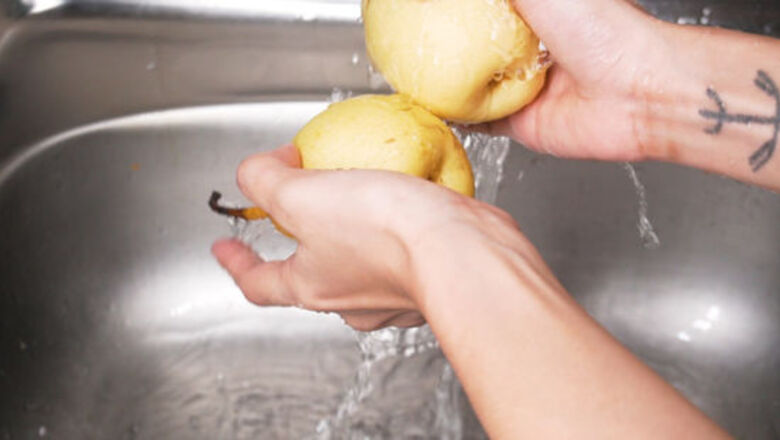
views
Slicing Your Pears
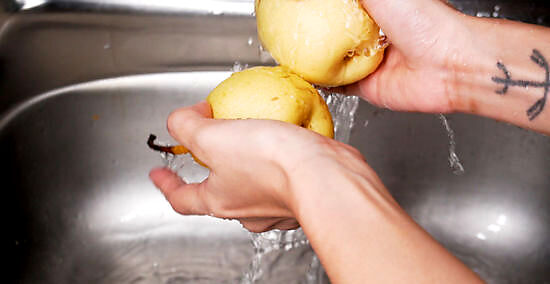
Rinse the pear in cool water. Whether you're peeling the pear or not, it's important to wash the skin to remove any dirt or bacteria that might be on the fruit's surface. You may want to use your fingers or a vegetable brush to gently scrub the surface of the peel to ensure it gets clean. Using warm or hot water may change the texture of the pear.
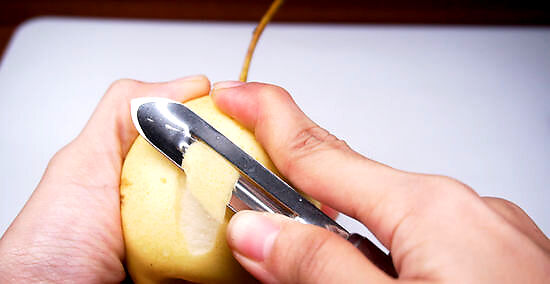
Peel the pear with a fruit peeler unless the peel is very thin. On many pears, the peel is thick and not necessarily pleasant to eat, even though it contains a lot of nutrients. If you want to peel the pear, hold the pear in one hand and the fruit peeler in the other, then drag the peeler down the pear vertically to remove the skin. Continue working all the way around the pear. If you like, once you remove the skin from the pear, you can use the peeler to smooth out any rough edges.
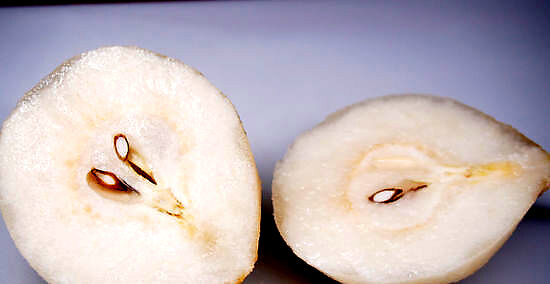
Place the pear on a cutting board and slice the pear in half vertically. Carefully use a sharp knife to slice the pear from the stem to the bottom. You can easily slice through a pear’s core, much like an apple. Using a cutting board will help ensure you don’t damage your countertop with the knife. In addition, it will protect your knife from becoming dull, especially if your counters are made from a hard surface like tile or granite.
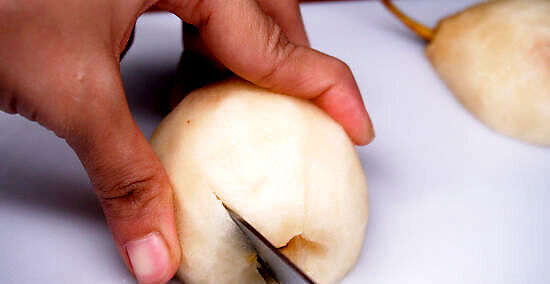
Cut a V-shape in the bottom of each half of the pear to remove the calyx. Use the tip of your knife to cut a small notch around the woody portion at the bottom of both halves of the pear to remove it. This portion of the pear has a tough texture and is not usually eaten. The calyx is part of the pear’s flower that stays attached after the fruit is formed.
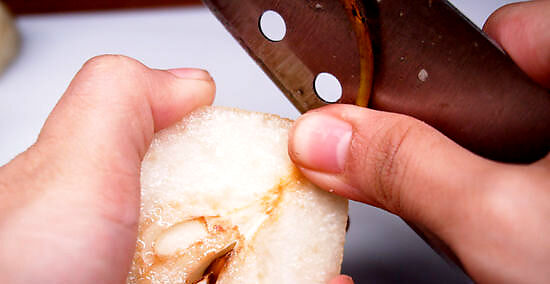
Use your knife to help you pull off the stem and its string. Hold the stem against the flat edge of the knife with your thumb, being very careful not to cut yourself. Pull the stem away gently, pulling upward so the stringy flesh attached to the stem comes away as well. If the string doesn’t come off with the stem, you can just pull it away by hand. In most cases, the stem will only be present on one half of the pear, although both halves may contain the string.
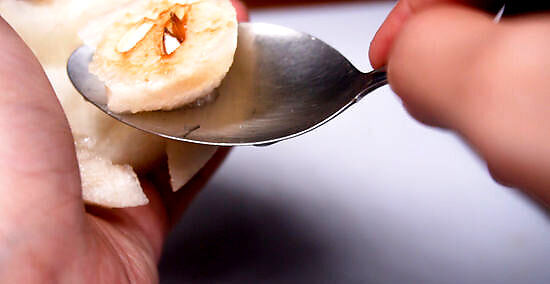
Scoop out the core from both halves with a spoon or melon baller. The core is a small round area in the middle of the fullest part of the pear, and it contains the seeds. It will have a slightly different texture if you touch the pear’s flesh, and it may look slightly more matte, while the rest of the pear will appear more juicy. Discard the core that you remove from the pear. If you’re serving pear halves, the hole left by the core is perfect for filling with caramel, cheese, or whipped cream.
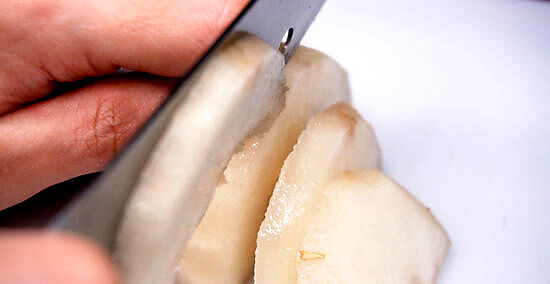
Turn the pear halves flat-side down and cut them into slices. For longer slices, make vertical cuts, or cut the pear halves horizontally if you want smaller slices. You can slice the pears as thin or as thick as you want them to be. By placing the flat, cut side of the pears face-down, it will be less likely to shift as you’re cutting it. This will result in more even cuts, and it will reduce your chances of accidentally cutting yourself.
Cubing the Pears

Wash the pear under cool running water. Even though you'll be peeling the pear, it's important to wash it first. This is because bacteria and dirt that are on the surface of the peel can be transferred to the pear's flesh while you're peeling it. Use your fingers or a fruit brush to gently scrub the surface of the pear to ensure it gets completely clean.

Peel your pear with a fruit peeler. Hold the fruit in your hand and run a fruit peeler vertically down the pear, removing the skin in long pieces. If you need to, go back over the pear once you’ve removed the peel to remove any small pieces you might have missed. Cubed pears are often used in dishes like pies, so it’s best to remove the entire peel.
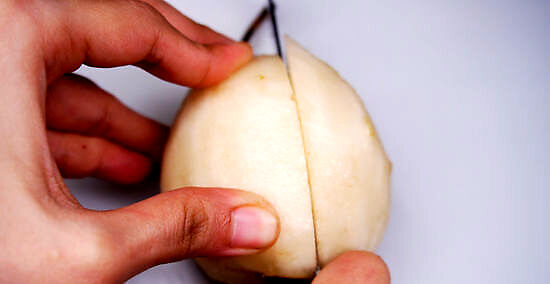
Lay the pear on its side and make a vertical cut on one side of the core. Cut away one side of the pear, slicing as close to the core as you can without going through it. If you feel your knife meeting any resistance when you’re slicing through the pear, you’ve hit the core. Simply remove the knife and make another cut a little further outward.
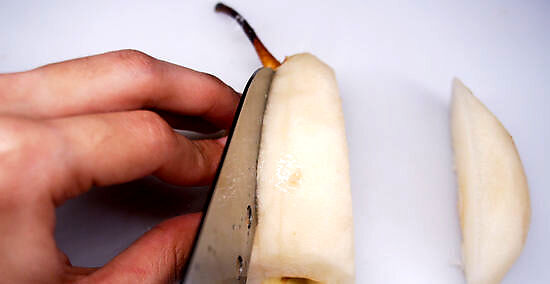
Turn the pear so the flat, cut side is facing down, and make 2 more cuts. By placing the cut side face-down, the pear will be more stable, and it will be less likely to roll under the knife. Make 2 cuts, once to the left of the core and once to the right. Again, be sure not to cut into the core itself.

Rotate the pear onto one of the new cuts and cut away the final side. At this point, you should only have 1 round side left on the pear. Turn the fruit so you can slice this side away from the core with a downward motion, which is safer than trying to cut the pear horizontally Discard the core when you’re finished.
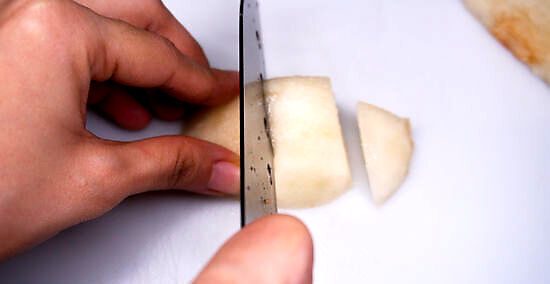
Cut each of the 4 pieces horizontally into ⁄2 in (1.3 cm) slices. Lay each of the pieces with the flat side down and cut them into long, even slices about ⁄2 in (1.3 cm) wide. If you want bigger pieces, it’s fine to make your cuts a little wider.
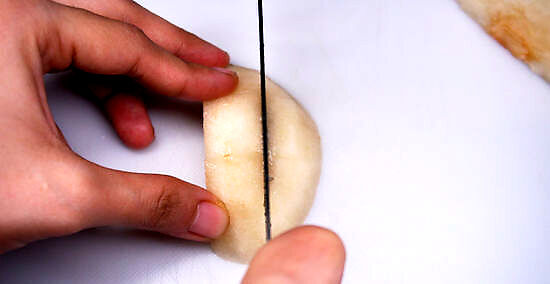
Turn the pieces 90° and continue cutting at ⁄2 in (1.3 cm) intervals. You’ll be left with evenly-sized cubes, perfect for baking into a pie, adding to a fruit salad, or just enjoying as a snack.












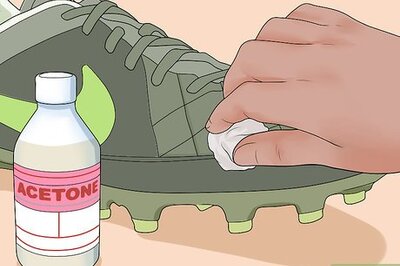

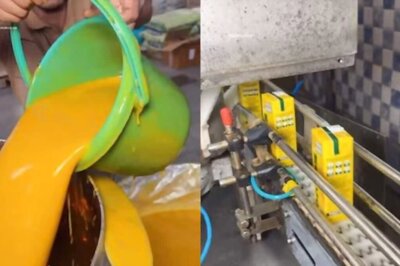





Comments
0 comment